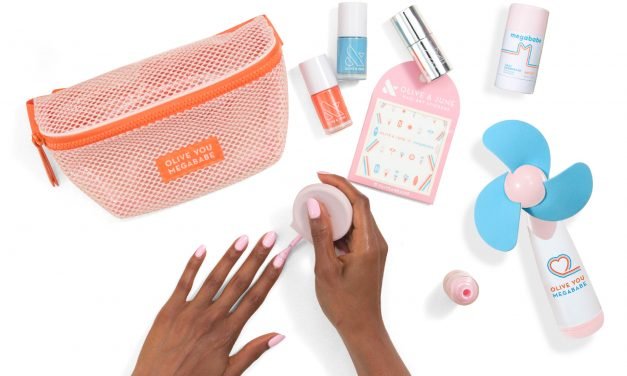The Olive & June x Megababe Collab Will Make Your Summer Easier & Cuter
I hate the term “girl boss.” Shouldn’t it be woman? Or just boss? If there are two female entrepreneurs I’d call bosses, it would be Katie Sturino and Sarah Gibson Tuttle. It makes perfect sense they would team up for the Olive & June x Megababe collection. In one cute-as-hell fanny pack, you get Gibson Tuttle’s Olive & June nail polish and Sturino’s Megababe natural deodorant. Oh, and a lot more.
The two beauty brand founders met back in 2019 and are finally making this epic collab happen. Now that masks are being removed (yay vaccines!) and summer fun is actually happening, chances are your nails need a little bit of TLC. (Just me?) This collection gets you three new Olive & June nail colors: Rosy Tips, Megababe Blue and You’re a 10. You also get the Super Glossy Top Coat.
Our mission at STYLECASTER is to bring style to the people, and we only feature products we think you’ll love as much as we do. Please note that if you purchase something by clicking on a link within this story, we may receive a small commission of the sale.

Olive & June.
Fans of Olive & June’s nail stickers will love these new ones, made in larger sizes to keep inclusivity in mind. The stripes will make people think you hit up some trendy salon. And if you’ve been wanting to try Megababe‘s natural deodorant—or you’re a fan and need a travel-size—know you also get a Rosy Pits Mini Daily Deodorant in a perfect to-go size. Finally, there’s a cute travel fan for those ultra-steamy summer days and the limited-edition fanny back that extends up to 57 inches.
To keep up the inclusive messaging, the duo threw an open casting call in NYC to be a part of the campaign. As a surprise, everyone who showed up got to be involved. How cute are these pictures?

Olive & June/Megababe.
The entire collection has a $54 value but it’s only $44 on the Olive & June and Megababe sites. Hurry and grab it to inspire your #hotvaxsummer plans.
Read More


















